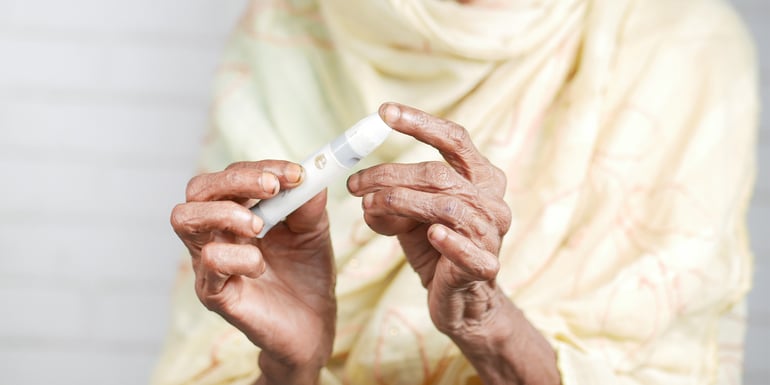
Developing diabetes later in life can significantly change your lifestyle. Diabetes affects how you eat, what you eat, and how you stay fit. If you’ve heard the dreaded words “prediabetes” from a physician, it’s not too late to make changes and prevent getting a diabetes diagnosis down the road.
Nearly half of all individuals with diabetes mellitus are older adults age 65 and older. Millions of older Americans — more than 26 million people —have what medical professionals call “prediabetes.” This means glucose levels are higher than normal but not high enough to be called diabetes.
While you might think diabetes is something you are born with, there are actually two types of diabetes that exist.
- Type 1 diabetes most often occurs in children and young adults who, once diabetic, are diabetic for the rest of their life. With Type I diabetes, the body does not make insulin.
- Type 2 diabetes occurs when the body does not make insulin or does not use insulin well. It is the most common kind of diabetes and occurs most often in middle-aged and older adults. The chance of developing type 2 diabetes is significantly higher if you are overweight, inactive, or have a family history of diabetes.
Diabetes can affect many parts of your body. Over time, diabetes, if not managed well, can cause serious health problems like:
People with type 2 diabetes may also be at greater risk for cancer and Alzheimer’s disease.Addressing Prediabetes with Healthy Eating & Physical Activity
If you have prediabetes, there are steps you can take to prevent or delay developing type 2 diabetes. In fact, type 2 diabetes is largely preventable by keeping weight under control, exercising, eating a healthy diet, and quitting smoking.
Healthy eating and being physically active can make the biggest difference.
A diet high in fruits, vegetables, nuts, whole grains, and olive oil can lower the risk of becoming diabetic. Choose foods low in fat and calories and high in fiber. Following a high fiber diet can help with blood sugar control and weight management. Eat a variety of foods to help you achieve your goals without compromising taste or nutrition. Try recipes specific for prediabetes. Avoid sweets, refined carbohydrates, and fatty meats or eat a low-carb breakfast.
If you're overweight, losing just 5% to 7% of your body weight — about 14 pounds if you weigh 200 pounds — can significantly reduce the risk of type 2 diabetes. Incorporate aerobic activity that increases your heart rate and breathing 3-7 times a week such as a brisk walk or water exercise. You can also incorporate strength training 2-3 times per week to grow muscle tissue which makes your body more sensitive to insulin. Trying yoga or tai chi can be a fun way to increase activity.
Changing habits — particularly habits related to nutrition or exercise — is a big commitment. Having a partner to encourage you on a weight loss journey can be extremely helpful. Also, being mindful of stress and finding ways to prevent or avoid stressful situations can prevent you from backsliding and falling back into old patterns and routines. Most importantly, each day is a new opportunity to try again. If you struggled the day before, consider today a new day to reach your goals.
How assisted living helps older adults with prediabetes
Making changes to diet and activity become increasingly difficult the older you are. Cooking for one or finding ways to increase physical activity when you no longer drive can be roadblocks to making the kind of changes needed to avoid a diabetes diagnosis after learning you are prediabetic.
Assisted living can provide opportunities to make lifestyle changes that aren’t as easy to make when living at home alone. They can support changes in diet by offering a wide variety of nutritious and delicious dining options, and exercise can become a fun group activity where new friendships with others can be formed.
In some cases, a diabetes diagnosis is unavoidable. Older adults who reside in assisted living communities can receive much needed support in administering medications, monitoring blood sugar levels and coping with changes in health that are a result of receiving a new diabetes diagnosis.





